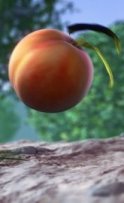Noodles and More
Posted in Production by andy Tuesday, February 26th, 2008 50 shots to go, don’t panic.
50 shots to go, don’t panic.
As the final deadline is getting closer and closer (more exciting, riveting, mind-warping news about that soon!) everything seems to be moving at light speed. almost the entire movie is animated and ready for further reviews and improvements, the environments are completed, final scenes set up, lit and composited to shape what’s going to be the first Open Movie of the Blender Institute: Big Buck Bunny!
*ehem* now that the PR-talk part of my brain is satisfied…
An essential part of the “finals”-process is the blender node compositor (aka. “noodle” – editing). A couple of weeks ago Nathan kissed the animation team goodbye and was transformed into a node-wrangler wizard. He is currently helping me to take the files from the animation- and environment department apart and assemble them back in compositing.
There are multiple reasons for utilizing a compositing pipeline that is integrated tightly into the rendering process:
- many scenes are way to complex to be rendered in one single pass (trees, leaves, bushes, grass, fur, feathers, huge textures, matte paintings)
- a rather annoying limitation of blender is that it does not handle motion blur and depth of field inside the rendering process very well, they have to be done in post. luckily blender has one of the most powerful 2D vector motion blur effects available, now with a new option to make curved motion blur (arcs are an essential tool in character animation)
- characters and scene elements often require individual color and effect treatments that go beyond lighting and exposure adjustments. after all, this is a cartoon!
- the anti-aliasing process is done after post-processing on ALL the rendering samples for extra crisp image quality (the new FSA option), also useful in masking and layer-seperation.
Here is a small step-by-step insight into this process:


 as we mentioned earlier, it’s getting quite busy over here. and now that the
as we mentioned earlier, it’s getting quite busy over here. and now that the